Gotham Calling’s curated retrospective of Cold War cinema arrives at the 1960s and, for the most part, the mood is one of doom and different types of terror… but this is nevertheless a creatively fertile period, generating a bunch of pungent films around the world.
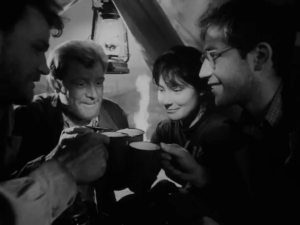
41. Letter Never Sent, aka The Unsent Letter, aka The Unmailed Letter (USSR, 1960)
The first Soviet entry on this list is a ruthless survival adventure featuring a small group of geologists in Siberia on an expedition in search of diamonds to fund the USSR’s industry and space programme, shot through virtuoso camerawork and jaw-dropping photography. Despite the overtly political framing by the initial scroll, much of the film – made during the post-Stalin ‘thaw’ era – actually paints quite a skeptical picture of typical motifs of socialist fiction such as the authorities’ efficiency and humanity’s ability to harness nature… Hell, you can even read into it an allegory of labor camps or of nuclear destruction. (Director Mikhail Kalatozov followed this with I am Cuba, an even more spectacular-looking chronicle of the lead-up to the Cuban Revolution, but although the Cold War connection is more blatant in that one, I much prefer the genre thrills of Letter Never Sent.)
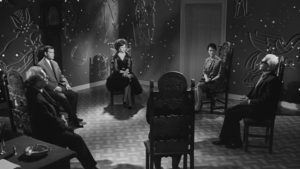
42. The Thousand Eyes of Dr. Mabuse (West Germany/Italy/France, 1960)
The culmination of one of the most eccentric trilogies in the history of cinema: if in 1922’s Dr. Mabuse the Gambler Fritz Lang captured the social chaos of post-WWI Germany through the schemes of the titular master criminal, and in 1933’s The Testament of Dr. Mabuse Lang conjured up an expressive symbol of the rise of fascism while elevating him to supervillain, The Thousand Eyes of Dr. Mabuse blasts this dark, pulpy series into the Cold War. And while this offbeat sequel is a heady puzzle box where new characters mysteriously circle each other with no clear connection to the previous films until the final minutes, thematically the series’ overarching narrative frames nuclear danger and expanding surveillance within a genealogy of evil across the decades. Moreover, many of the movie’s concepts and set pieces pave the way to the spy-fi strand that will gain prominence throughout the rest of the ‘60s.
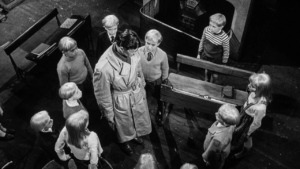
43. Village of the Damned (UK/USA, 1960)
Similarly, the primary horror in Village of the Damned doesn’t originate from the geopolitical division itself, even though the latter appears to be in the mind of the authorities responding to the odd occurrences of a small British village, including a batch of children with mental powers… The enemy within and collective thinking have never looked so sinister, but, while the military and the Home Office defend coercion in the name of national security (and monitor how the Soviets are dealing with the situation), a scientist dreams of a new generation that can push the world beyond wars, disease, and human misery. And so, despite the supernatural twist, we get another atomic-era cautionary tale about science’s destructive potential. (The premise was reworked in strident pacifist terms for 1964’s Children of the Damned, where the Cold War themes are much more pronounced, but I prefer this version’s creepy restraint and ambiguity.)
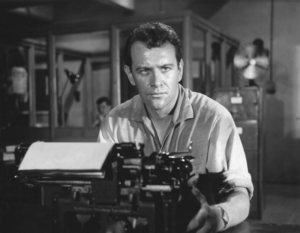
44. The Day the Earth Caught Fire (UK, 1961)
Focusing on the disruptive potential of nuclear bomb tests regardless of whether or not they lead to actual war, The Day the Earth Caught Fire is one of the most atmospheric entries into the early apocalyptic cycle, combining an over-the-top premise with an ‘adult,’ realistic treatment. Much of it is told from the perspective of a newspaper, complete with witty, rapid-fire dialogue worthy of His Girl Friday and Ace in the Hole.
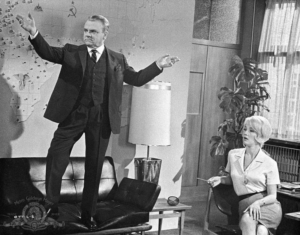
45. One, Two, Three (USA, 1961)
If it’s rapid-fire dialogue you want, though, look no further than One, Two, Three, an absolutely frantic screwball farce about the head of Coca-Cola in West Berlin trying to impress his boss to get a promotion… If A Foreign Affair was Billy Wilder’s caustic take on Trümmerfilme, here the whole storyline about the capitalist’s daughter falling for a communist plays like a madcap spoof of the subgenre of divided Germany romance I brought up a few posts ago, with both sides of the Cold War cynically presented as grotesque (each in its own way) and horny (in pretty much the same way).
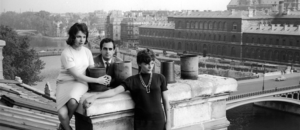
46. Paris Belongs to Us (France, 1961)
Part mystery, part conspiracy thriller, part existentialist drama, even without the explicit references to McCarthyism the extraordinary Paris Belongs to Us would’ve earned a place on this list for the way it eerily nails a general zeitgeist of anxiety and paranoia.
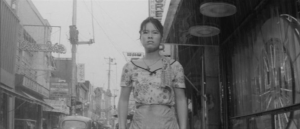
47. Pigs and Battleships (Japan, 1961)
A youthful, irreverent, and vibrantly directed gangster picture, Pigs and Battleships offers a biting portrayal of the black market rackets – and widespread prostitution – surrounding the expansion of US military bases abroad, particularly in Japan.
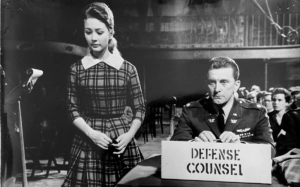
48. Town Without Pity (USA/Switzerland/West Germany, 1961)
Town Without Pity addresses a similar topic, but using a very different approach. Making the most out of an ultra-catchy song, this is a courtroom drama about the trial of Germany-based GIs accused – and guilty – of gang-raping a local girl. Based on a novel inspired by an actual incident, Gottfried Reinhardt’s picture may not be as ambiguous as Otto Preminger’s Anatomy of a Murder, but it provocatively engages with the violence of putting a rape victim on the witness stand to be confronted by a defense lawyer whose job is to publicly discredit her… It’s also a potent film about the oppressive presence of the US military abroad, about a conservative West Germany dealing with more foreign troops and military bases than any other country in the world, and about the social disruption that can be found in the various fronts of the Cold War.
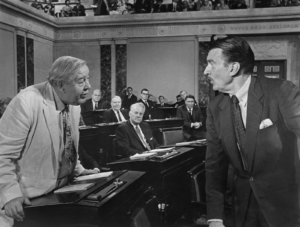
49. Advise & Consent (USA, 1962)
Speaking of Preminger… His willingness to delve in moral complexity and treat audiences like intelligent adults is in full display throughout Advise & Consent, a sophisticated political thriller about the nomination process for a US Secretary of State which tackles the era’s recent witch hunts. (If Anatomy of a Murder was no doubt on the watch list for the writers of The People v. O.J. Simpson, this one comes across like a convincing pilot episode for The West Wing!).
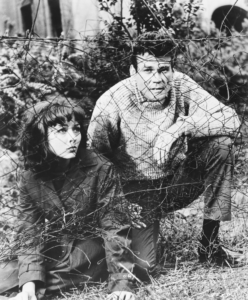
50. Escape from East Berlin, aka Tunnel 28 (USA/West Germany, 1962)
And so we get to the Berlin Wall, which didn’t just alter the Cold War’s landscape (drastically materializing division and adding yet another source of suffering), but it also fuelled an entire subgenre of movies about daring escapes from East Germany. Although openly propagandistic and sensationalistic – including documentary-like voice-overs and archival footage – these works nevertheless provided genuine tension and thrills by borrowing the effective dramatic structure of prison/POW narratives (having us root for heroes in search of freedom, with deadly stakes) while also resonating with outrage over the real-world situation. Still, emotional manipulation and suspense can be done with varying levels of cinematic skill… Made less than a year after the Wall’s construction, Escape from East Berlin delivers the goods with classical clarity, benefitting from a particularly taut mise-en-scene. While the acting isn’t always top-notch, director Robert Siodmak uses the expressionistic visual style he developed doing horror and film noir to create a tighteningly claustrophobic GDR. And for all its anti-communism, it’s also a story about teamwork and solidarity.
